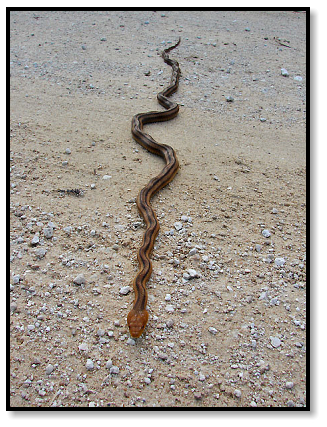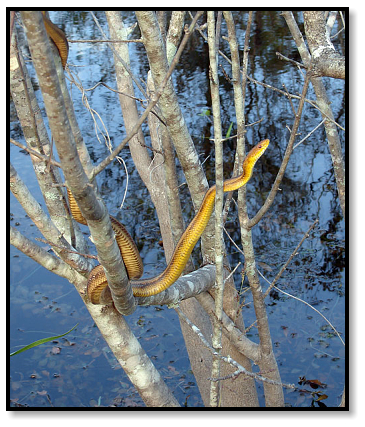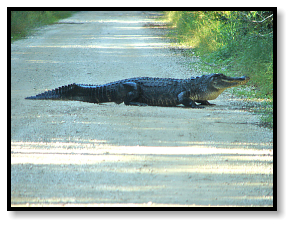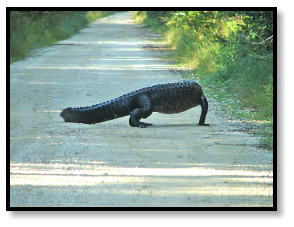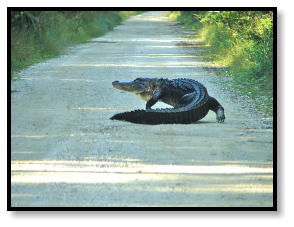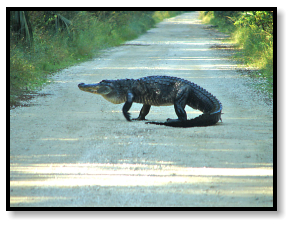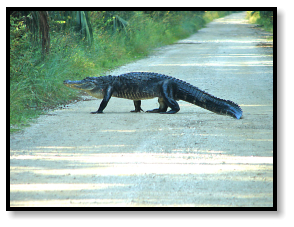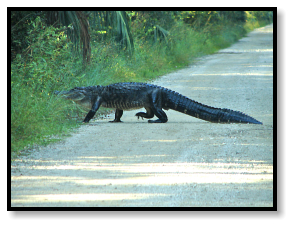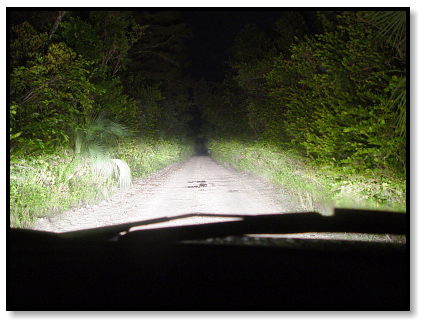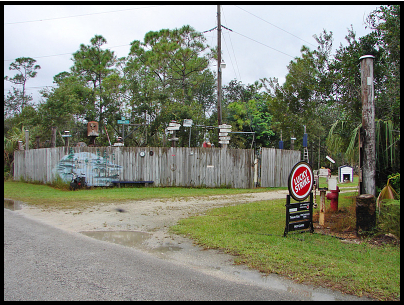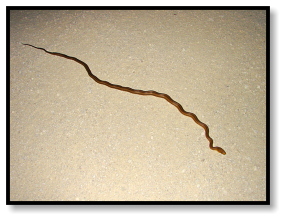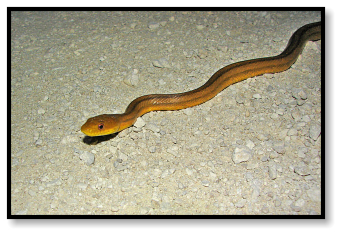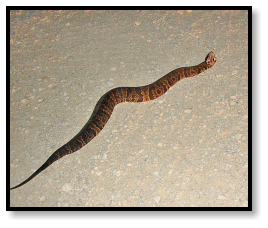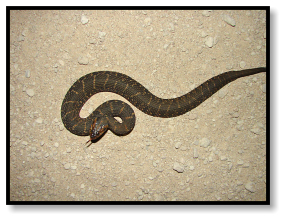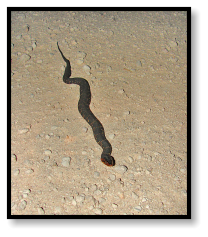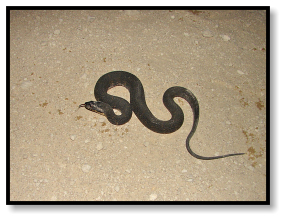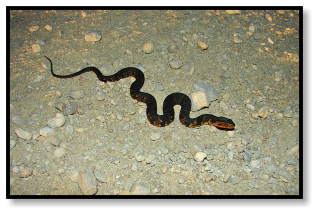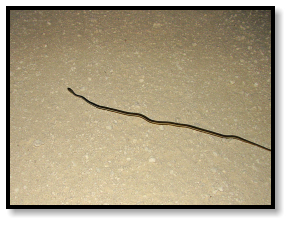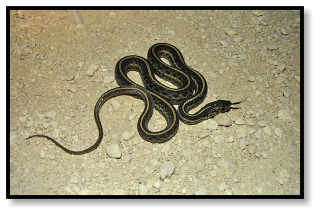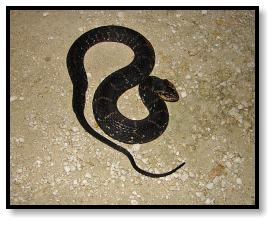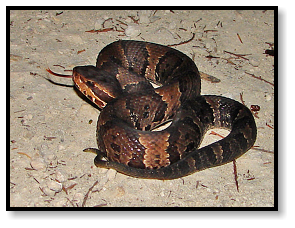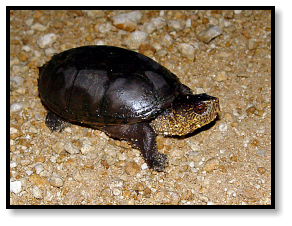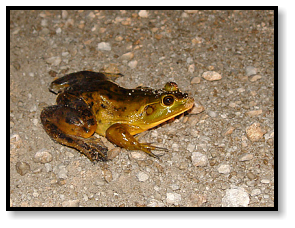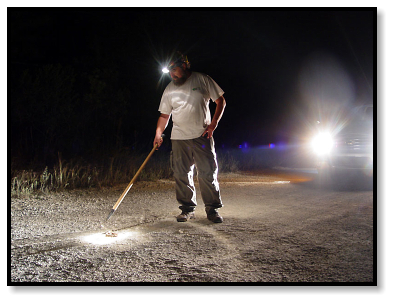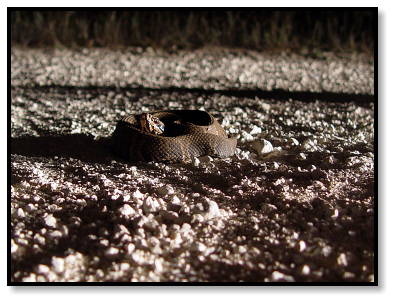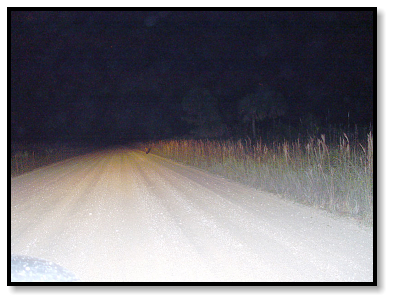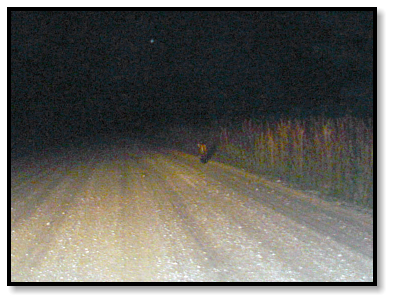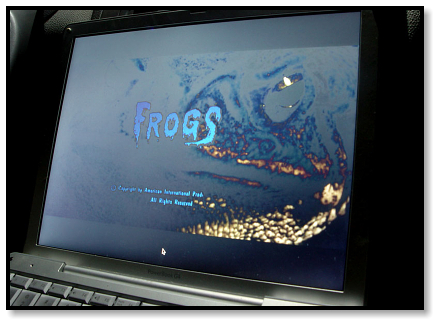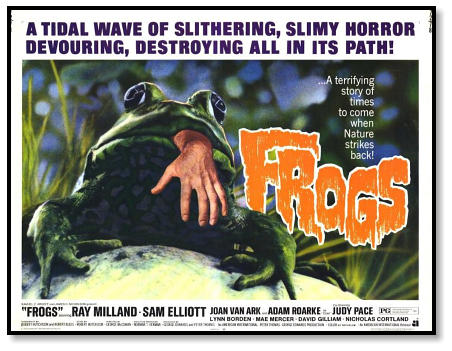

FLORIDA
October 2006

3 of 3


FLORIDA
October 2006


3 of 3
Our first snake is found on the road. It’s late in the day and a pick-up passes, raising a cloud of dust in its wake.
We emerge from the haze to see a thin, dark line stretched between freshly made tire tracks. Fortunately, the truck has
straddled the snake, and it remains perfectly still until we send it back to the safety of the surrounding sawgrass.
Beside the road is a canal where herps often hang out along the marshy edge.
.
We aren’t really expecting to see snakes on the road before dark, so we almost run right by this one. Our eyes
are focused far ahead, but suddenly Ron swerves and slams on the brakes, the car skids on the gravel, and we jump
out to rescue this Rat Snake from the dangers of inattentive drivers (like us).
Another herp in the middle of the road, but this time we couldn’t miss it even if we wanted to. If anyone was in
danger of becoming roadkill, it wasn’t him.
For those of us South Florida herpers who came of age before the Big Cypress Preserve, cruising Loop Road was
an essential rite of passage. It was a rough ride back then, with car-swallowing potholes and the menacing residents
of Pinecrest, a settlement of squatters deep in the swamp.
So it’s with caution that I look up from photographing some snakes as one of the locals approaches. He asks
what we’re doing. “Just taking pictures,” I reply. It’s a relief to hear that he, too, shares an interest in nature
photography, even has a website called Nature’s Exotic Beauty.
In fact, turns out that Lucky is both a commercial photographer and the friendliest sort of fellow, inviting us to
visit his studio and view his portfolio, which, we discover, is all about nature photography of a different sort.
For a good description of both Lucky and the old Loop Road,
read the article Back on the Loop by Jeff Klinkenberg.
After dark our road cruising really gets started.
It’s a bit like going to a drive-in theater. The sky goes black, the projector comes on, and we watch through the
windshield as characters appear on screen.
Of course, from a snake’s point of view, I imagine it’s a bit more like alien abduction.
Occasionally other animals show up, the usual assortment of raccoons, possums, rodents, and other personnel
from the Florida Department of Roadkill. We see a few deer, but something seems wrong with this one. From a
distance we can see it walking straight ahead, but it moves with a funny shifting of its shoulders, and the head is out
of sight, apparently bent low. Then we get closer, and all of a sudden we realize what it is . . . Panther!
I fumble for my camera, and leaning out the window of a moving car, bouncing on a gravel road, in the dark
with my subject just beyond the reach of our headlights, I zoom in as far as the telephoto will allow and squeeze off a
couple of grainy shots.
We inch closer, getting within 100 feet. Amazingly, the cat doesn’t immediately take off, so we keep our distance
and slowly follow it for several minutes. Finally, it turns towards the light, gave us a good look, then disappears
across the sawgrass, crashing through palmetto into a hardwood hammock. We listen until it’s too far away to hear,
then reluctantly move on.
How do you follow something like that? What could be more exhilarating than the rare sighting of an
endangered species victimized by human exploitation of Nature? Obviously, there’s only one thing left to do:
Sit in the car, like a drive-in theater, and watch Nature strike back.
The 1972 Classic
Surrounded by the Swamp ― this “perfect paradise for loathsome reptiles”― I root for the hometown herps
and settle in for the night, deeply content, wishing to be nowhere else.
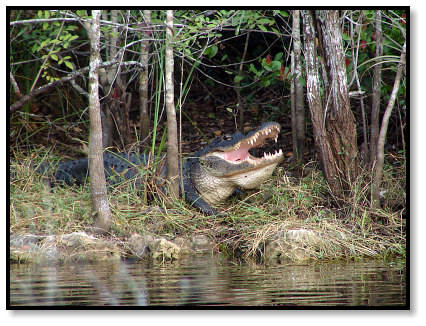
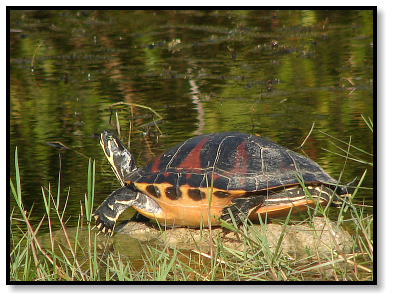
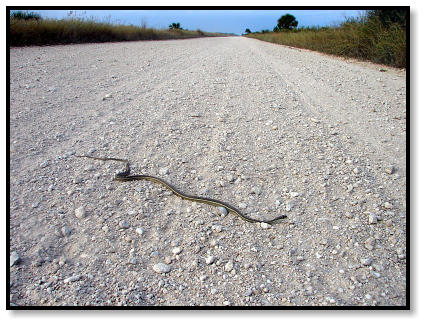
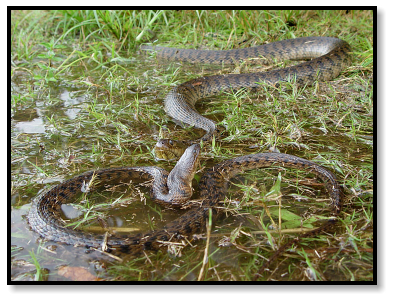
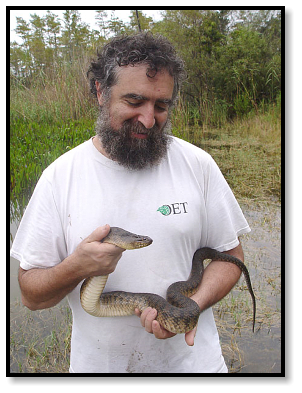
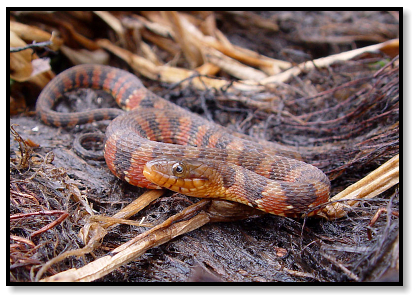
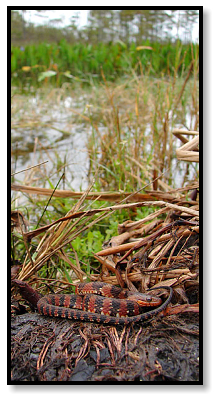
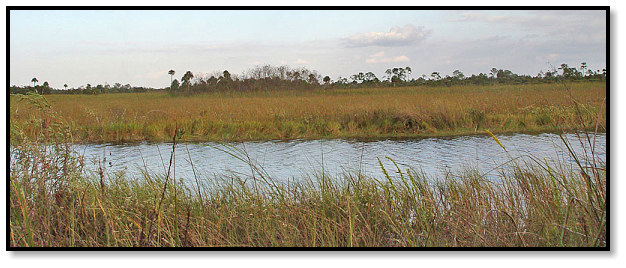
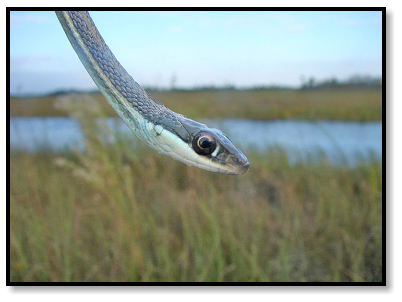
Peninsular Ribbon Snake
Thamnophis sauritus
Florida Redbelly Turtle
Pseudemys nelsoni
Florida Green Water Snake
Nerodia floridana
Florida Banded Water Snake
Nerodia fasciata pictiventris
Peninsular Ribbon Snake
Thamnophis sauritus
